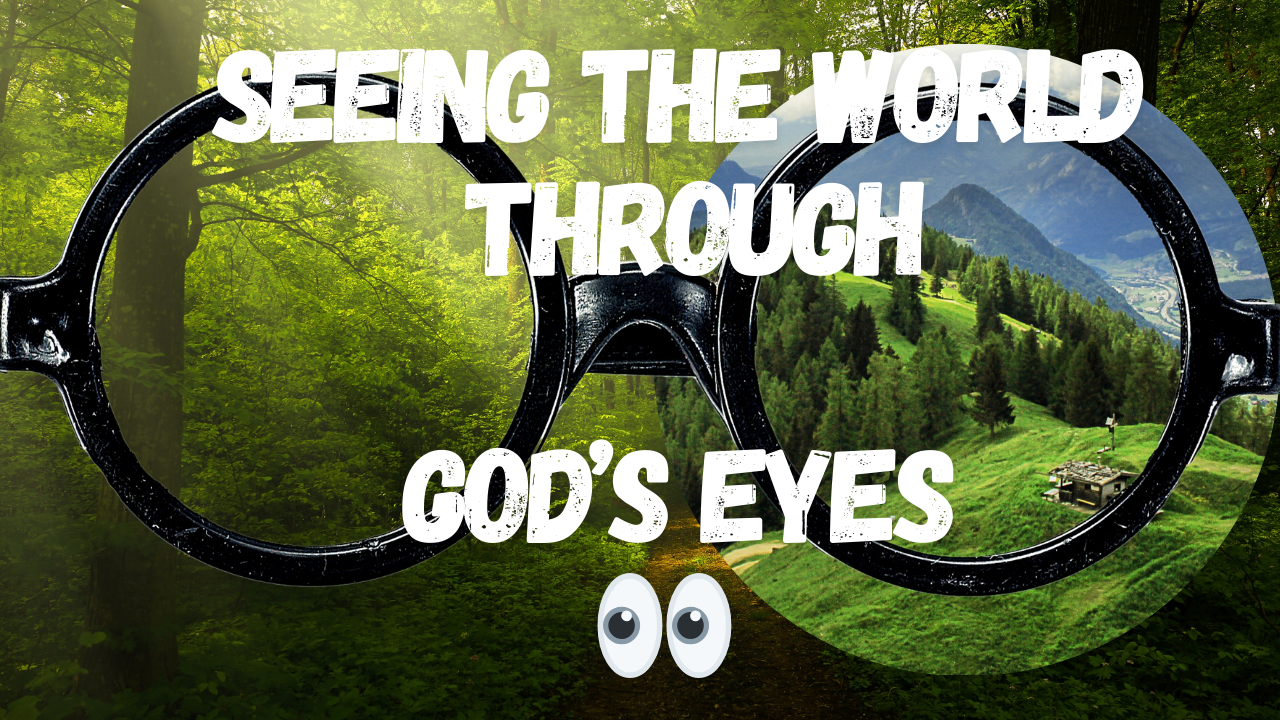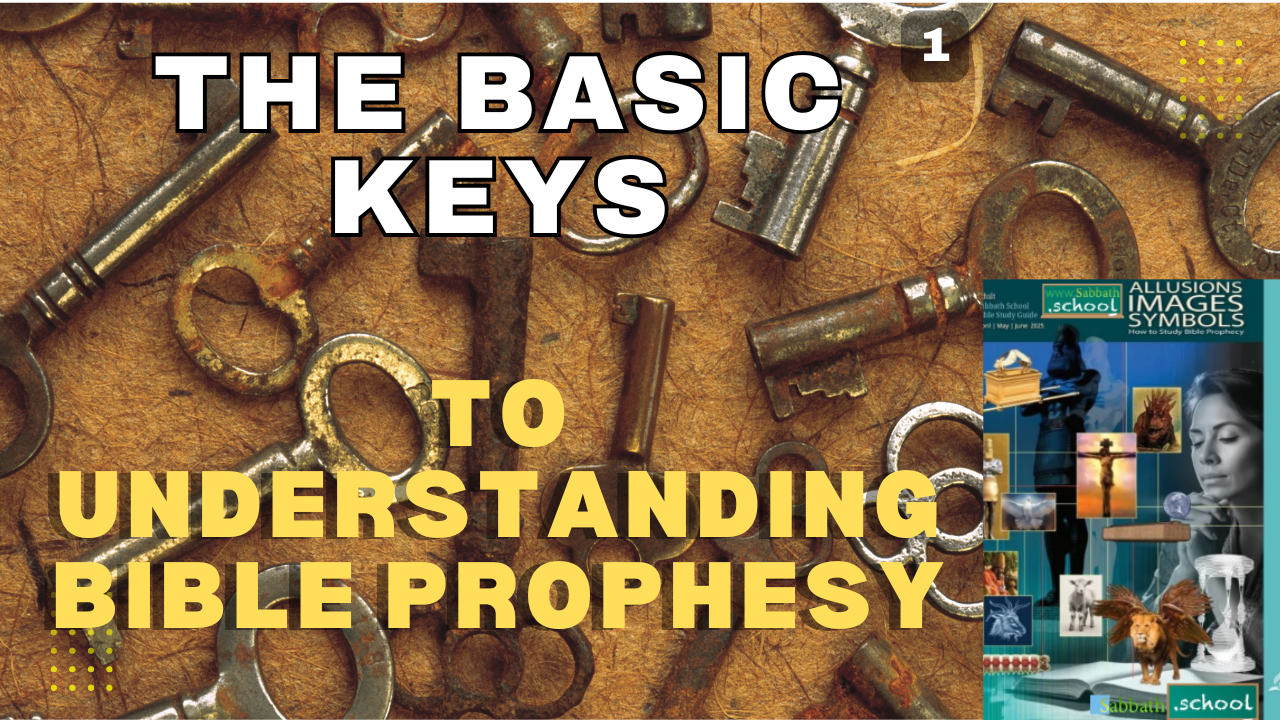The Book of Mark (Lesson4) Parables
SEEING THE WORLD THROUGH GOD’S EYES👀
Have you ever tried to clarify a bad idea, concept, or assumption, but the person just did not get it? Have you considered telling a story? Jesus used stories to help his hearers see the world from His and God’s point of view.
“Welcome back! This is Part 4 of our 13-part series. We are studying the Book of Mark.
Through the eyes of Mark, in this lesson, we look at how Jesus captured the attention of his listeners and challenged them to think and act in new and different ways.
Join us as we examine some of the moments in Jesus’ captivating parables and apply them to our lives today in practical and meaningful ways.
Through them, we uncover the personal struggle and the theme of redemption that make the gospel of Jesus a compelling Transformative narrative for our day.
But, before we begin, as always, let’s invite God’s Presence.
Inviting God’s Presence.
Almighty God, open our eyes that we might see and open our ears that we might hear. Transform us into what you desire us to be. In Jesus’ Name, Amen.
The Book of Mark
(Lesson 4)
Parables
Part 1 Introduction
Parables are helpful in clarifying unclear concepts, relaying ideas that are difficult to understand, and capturing your listener’s attention. They challenge listeners’ thinking, seeing, and behaviors.
Parables reveal spiritual truths to those who are open to listening and considering what is being said. For example, Jesus used parables.
In Mark 4:24-25, we encounter a profound teaching from Jesus wrapped in a parable.
“Then He said to them, ‘Take heed what you hear. With the same measure you use, it will be measured to you; and to you who hear, more will be given. For whoever has, to him more will be given; but whoever does not have, even what he has will be taken away from him’ ” (Mark 4:24, 25, NKJV).
What did Jesus mean here? Why did Jesus use parables? Jesus used parables to capture his audience’s attention. Parables, by nature, engage the imagination and prompt reflection.
For example, when Jesus spoke of a farmer scattering seeds, His listeners could easily visualize the common activity of that day.
This familiarity helped them remember His words whenever they saw such scenes in their daily lives.
It made the spiritual lessons resound repeatedly and more deeply.
The Gospel of Mark includes four parables:
- The Sower/Farmer: 2. The Lamp: 3. The Measuring Basket: and 4. The Mustard Seed.
Mark has the fewest parables of any of the Synoptic Gospels, which include Matthew and Luke. They are called synoptic because of how close they are in similarity and sequence.
Much of Mark 4 revolves around the parable of the Sower. This parable is told first, followed by the reason Jesus told the parables, and then Mark provides the interpretation.
We’ll examine these stories one by one, looking at their relevance today. We begin with the Parable of the Sower. A Sower today would be considered a farmer or planter today.
Read Mark 4:1-9Then Continue to Part 2: The Parable of the Sower
The Book of Mark
(Lesson 4)
Parables
Part 2: The Parable of the Sower
The Parable of the Sower offers insights into how to better receive and nurture the word of God in our lives.
However, when reading Jesus’ parables in the Gospels, the tendency is to move directly to the interpretation. But often, other than short comments such as “The kingdom of God is like,” or “He who has ears to hear, let him hear,” Jesus does not explain the parable.
Therefore, it is best to take some time to examine the story itself to determine its direction.
In doing this with the parable of the Sower, we can gain a range of insights from God’s perspective.
For instance, the seed is the same in each case, but it falls on four different types of soil.
The thing is, where it falls greatly influences what happens to the seed.
So, instead of one continuous story, the parable is really four individual stories told to completion in each setting.
Notice that the length of time for completing the story increases with the new story that follows.
In the parable of the Sower, Jesus presents a simple yet profound story about a farmer sowing seeds, which fall on four types of ground, each illustrating a different reception of God’s word:
- The seed that falls on the road is eaten immediately by the birds.
- The seeds that fall on the Rocky Ground sprout quickly. They take only a few days or weeks to grow to maturity. Due to a lack of depth and moisture, they wither under the sun’s heat.
- Seeds that fall on thorny ground fall among weeds and thorns, and they find themselves choked by thorns.
- Finally, seeds that fall on good soil thrive and produce a bountiful harvest. They fall on fertile ground. They take the longest of all, most likely an entire growing season, as is the normal pattern for a crop.
The first three stories are about failure. Only the last is a story of success. It tells of a good, abundant crop season.
Each successive story takes more time to tell. But only one story, the last story, is about success.
The other three stories are stories of failure, with each taking more time but still failing to mature.
Though Jesus did not explain what the parable meant to His larger audience, he did explain it to a smaller group interested in its meaning. Read Mark 4:13-20 to see how Jesus interprets this parable.
Then View the next segment of this video, Part 3: Jesus’ Interpretation
The Book of Mark
(Lesson 4)
Parables
Part 3: Jesus’s Interpretation
We now examine the Parable of the Sower, looking at Jesus’ own explanation. As you know, this is not just a story of farming techniques; it’s a spiritual metaphor that Jesus uses to teach us about the conditions of our hearts and their effect on our receiving God’s word.
After sharing the parable with a large crowd, Jesus gave no explanation.
Mark tells us in Mark 4:1 that Jesus spoke this parable before “a great multitude.” Only later, as recorded in Mark 4:13–20, did He explain its meaning to His closest followers.
Jesus explains the parable by linking certain elements of the story to real-world concepts.
The parable, however, is a loose allegory, meaning not every detail in the story has a direct real-world counterpart.
- Jesus identifies the seed as “the Word,” referring to the Word of God, as echoed in James 1:21, urging us to rid ourselves of sin and humbly accept the Word of God, which, when planted in us, can save our souls.
21 Therefore lay aside all filthiness and overflow of wickedness, and receive with meekness the implanted word, which is able to save your souls. (James 1:21)
The seed, which is the Word of God, is constant and unchanging. When planted within our hearts, it has the power for growth and life.
The different soils represent different types of listeners. In Jesus’ interpretation, everyone hears the Word, as the seeds are sown on all types of soil. However, how it is received varies.
The wayside soil is hard, and birds quickly snatch away the seed. Jesus compares this to Satan taking away the truth from our hearts.
The Rocky soil has little depth. Jesus links this to people with shallow commitments who have not considered the cost of following Jesus.
They initially receive the word with joy but have no depth. When troubles arise, their faith quickly withers away.
On the other hand, the weedy-soil seed grows. It represents those who do not fall away because of hard times, but their focus is on the cares of this word rather than the kingdom of God. Therefore riches, pleasures, and other things of life distract them and, ultimately, prevent further growth. They are at a spiritual stand still.
In contrast, good soil represents those who hear the Word, receive it, and allow it to grow, resulting in an abundant crop.
The good soil embodies those who hear, accept, and fully embrace the word, allowing it to transform their lives and produce abundant spiritual fruit. (Split)
Jesus uses this parable to press upon us the importance of how we receive and nurture His word. Our hearts can either be receptive and nurturing or obstructive and destructive to spiritual growth.
Rather than being straightforward, why did Jesus teach using parables?
Read Mark 4:10-12. Then Continue to the next segment of this video, Part 4: The Reason for the Parables
Knowing Jesus’ purpose for using parables can help deepen our understanding of His teachings and make them more meaningful in our lives. Why did Jesus use parables? Was it to hide the truth from certain people?
In Mark 4:10-12, Jesus’ disciples ask Him about the parables.
On the surface, these verses might suggest that Jesus intentionally used parables to keep outsiders in the dark.
However, this interpretation does not align with Jesus’ actions and teachings in other parts of the Bible and the Gospel of Mark.
For instance, in Mark 3:5- 6, Jesus is hurt by the hard hearts of the religious leaders.
5 And when He had looked around at them with anger, being grieved by the hardness of their hearts, He said to the man, “Stretch out your hand.” And he stretched it out, and his hand was restored as whole as the other.
6 Then the Pharisees went out and immediately plotted with the Herodians against Him, how they might destroy Him. (Mark 3:5-6)
In Mark 3:22-30, Jesus takes the arguments of the scribes seriously and explains in detail why they are mistaken.
In Mark 12:1-12, the religious leaders understand that Jesus’ parable of the vine-growers is about them; it warns them about where their plot against Him is heading and the terrible consequences to follow.
It stands to reason that if He had no concern for them, He would not warn them.
Therefore, Jesus’ words in Mark 4 need a closer look to understand His point.
Jesus responds in Mark 4:10-12 by quoting Isaiah 6:9-10, which can be confusing if read in isolation.
Isaiah 6:9-10
9 And He said, “Go, and tell this people: ‘Keep on hearing, but do not understand; Keep on seeing, but do not perceive.’
10 “Make the heart of this people dull, And their ears heavy, And shut their eyes; Lest they see with their eyes, And hear with their ears, And understand with their heart, And return and be healed.” (Isaiah 6:9-10)
It might seem like Jesus is trying to hide His message, but that’s not the case. Instead, Jesus uses parables to help people understand and accept His teachings.
Thus, Jesus uses these stories to reach their hearts and offer them a chance to change.
Isaiah 6:1-13 recounts Isaiah’s vision of God’s glory in the temple. Feeling overwhelmed and unworthy because of his uncleanness, Isaiah is cleansed by God and given a shocking message for Israel, urging them to stop doing evil.
Although it sounds out of step with the rest of Isaiah, where there is much comfort for God’s people, it mirrors Jesus’ purpose in Mark 4:10-12, where He uses parables to convey important truths to those open to listening and obeying God’s word.
In Isaiah 6, the message is intended to shock the people and wake them up so that they will turn from their evil ways.
The key to understanding what Jesus is saying is found in Mark 3:35. ——
35 For whoever does the will of God is My brother and My sister and mother.” (Mark 3:35)
In this passage, we see that to understand Jesus’ words and teachings, one must do the will of God, which, therefore, brings them into Jesus’ family.
Consequently, there were those who had rejected Jesus and had already decided that He was possessed by the devil.
Like Satan, who is not willing to listen or obey, Jesus illustrates that their own hearts were keeping them from hearing and accepting the truth.
The point of Jesus’ quoting from Isaiah 6 is not that God is keeping people out but that their own preconceived ideas and hardness of heart prevented them from accepting His saving truth.
This concept is central to the parable of the Sower. How people respond determines what type of soil they want to be.
Everyone decides for themselves whether or not they will surrender their hearts to Jesus. In the end, the choice is ours.
Thus, Jesus used parables to awaken curiosity, challenge complacency, and convey deep truths in a memorable way that captures our attention.
According to “Christ’s Object Lessons” (p. 20), parables were a popular and effective teaching method, respected by both Jews and other nations. They were designed to reach those genuinely seeking knowledge.
In “This Day With God” (p. 361), it is noted that those who are skeptical, superficial, or secular struggle to understand and apply Jesus’ teachings. They lack the faith needed to overcome worldly distractions.
Jesus also used parables to address the opposition from religious leaders and other influential figures who sought to discredit Him. By teaching in parables, Jesus conveyed cutting truths without giving His enemies grounds for immediate condemnation (Christ’s Object Lessons, p. 22).
Jesus’ parables often drew from nature and everyday experiences to teach about God and how He views the world. —-
Romans 1:20 reminds us that God’s invisible qualities are understood through His creation.
Jesus brought people’s minds into contact with the Infinite, teaching them to see God in His works, word, and providences.
As we reflect on why Jesus used parables, remember that He spoke in a way that invites us to seek, understand, and apply His words to our lives.
It allows us to have a worldview through God’s eyes. In other words, we learn to see things from God’s perspective.
Each of us chooses the type of “soil” we become. The question is whether we will be receptive and allow His words to penetrate our hearts and transform us or let distractions and hard-heartedness keep us from growing.
Another important message from Jesus is told in the parable of the lamp. What is Jesus trying to convey to us about God here? Read Mark 4:21-23.
Then Continue to the next segment of this video: Part 5: The Lamp and the Measuring Basket
The Book of Mark
(Lesson 4)
Parables
Part 5: The Lamp and the Measuring Basket
Here, we examine two new parables Jesus told in Mark 4: These stories are not just narratives; they are deep teachings providing God’s view on how we should live out our faith in everyday activities and decisions.
Jesus uses the familiar image of a lamp to show a vital spiritual lesson. In His time, lamps were essential in every home, not just for illumination but as symbols of openness and clarity.
In Jesus’ time, houses in that region varied in size and construction based on location and wealth.
Many homes followed a Greek pattern, built around a courtyard, but with differing levels of elegance.
Mark does not say: therefore, Jesus could have been referring to the more elegant or simpler houses of the peasants.
But regardless, the key point is that in the end, the truth about who Jesus is will be revealed to everyone who has ever lived on this earth.
In Mark 4:21, Jesus poses two rhetorical questions about the purpose of a lamp:
21 Also He said to them, “Is a lamp brought to be put under a basket or under a bed? Is it not to be set on a lampstand? (Mark 4:21)
Clearly, a lamp is meant to be placed high to spread light across the room, making everything visible. Right?
Thus, you would expect a positive answer to Jesus’ second question in Mark 4:22. “Is it not to be set on a lampstand?”
Jesus presents a bizarre, almost humorous scenario to make His point.
Mark 4:22 reinforces this, explaining the parable by pointing to the idea of secrets being made public.:
22 For there is nothing hidden which will not be revealed, nor has anything been kept secret but that it should come to light. (Mark 4:22)
This is certainly made clear when you think about it in terms of today. With social media, phone cameras, and email, we understand the possibility of secrets being made public! But what Jesus is talking about is the gospel, the Good News about Jesus Christ.
Jesus emphasizes that the Gospel is not to be concealed but shared openly, illuminating the path for others just as a lamp lights up a house.
In the next parable, Jesus discusses the principle of measurement. He relates it to how vendors at markets use baskets to measure goods fairly, ensuring the customer receives proper value.
24 Then He said to them, “Take heed what you hear. With the same measure you use, it will be measured to you; and to you who hear, more will be given.
25 For whoever has, to him more will be given; but whoever does not have, even what he has will be taken away from him.” (Mark 4:24-25)
This parable teaches us that the measure of understanding and spiritual insight we receive is proportional to the measure of our engagement and openness to God’s word.
If we are generous in our spiritual pursuits, much will be given to us in understanding. Conversely, if we hold back, even what we have might diminish.
In many places around the world, fresh produce is sold in open markets where sellers use devices to measure their products.
It is common for these sellers to add a little extra to the buyer’s purchase to ensure they feel they are being treated fairly.
Jesus uses this practice to illustrate a point about openness to the truth. If someone is open and follows the light, they will receive even more.
But if they reject the light, even what they had before will be taken away.
Hence, these parables encourage us to reflect on how we handle the Word of God.
Are we allowing God’s word to shine through us so that it lights up the whole room, or are we hiding our lamp under a basket, keeping what we know and understand about God to ourselves?
When we help others, are we generous, or are we stingy in our giving and sharing?
When we embody the principles Jesus teaches in everyday interactions, whether supporting a friend or conducting business from God’s perspective, we illuminate truth and practice integrity when we reflect God’s fairness and generosity.
When we live openly and give freely, we enrich others’ lives and receive abundant knowledge, understanding, and grace in return.
Therefore, let us challenge ourselves to be beacons of light and measures of generosity in our communities.
Remember, the truth we carry is not just for us but for all, and the measure we give will be the measure we get back.
To help us see things through God’s worldview, Jesus tells another parable that focuses on our role and God’s miraculous work in the growing process. Read Mark 4:26-29.
Then Continue to the next segment of this video, Part 6: Parable of Growing Seed
The Book of Mark
(Lesson 4)
Parables
Part 6: Parable of the Growing Seed
Two powerful parables in Mark 4 are the Growing Seed and the Mustard Seed. Through these parables, Jesus imparts lessons about the Kingdom of God.
The Parable of the Growing Seed in Mark 4:26-29 begins with a simple act: a man scattering seed on the ground. What follows is a process that occurs without his further intervention.
Growth happens naturally and without explanation, driven by forces beyond human control.
26 And He said, “The kingdom of God is as if a man should scatter seed on the ground,
27 and should sleep by night and rise by day, and the seed should sprout and grow, he himself does not know how.
28 For the earth yields crops by itself: first the blade, then the head, after that the full grain in the head.
29 But when the grain ripens, immediately he puts in the sickle, because the harvest has come.” (Mark 4:26-29)
The seed sprouts, grows, and eventually yields a harvest, all without the sower’s understanding of the intricate details of its development.
This parable teaches us that the Kingdom of God often works in ways we cannot see or fully understand.
Although we have a part to play, the real growth is the work of God.
Growth is not an endless process; its ultimate maturity is similar to the harvest, symbolizing the end of earth’s history when Jesus returns.
This story reassures us that no matter how invisible the process may seem, God is actively at work.
This parable emphasizes how something very tiny can grow into something incredibly large. Mustard seeds typically measure one to two millimeters in diameter (0.039 to 0.079 inches).
It is believed that the plant referred to is the black mustard which has tiny seeds.
While not the smallest seeds in the world, they are quite small compared to the plant they produce, which can grow up to three meters (ten feet) tall.
Jesus notes that birds even nest in the branches of the mustard tree.
This reference alludes to Psalm 104:12, which speaks of God’s power in creating the world, and Daniel 4:10-12, which depicts Nebuchadnezzar as a great tree providing shade and food for all.
The mustard seed parable illustrates the Kingdom of God’s extensive growth from small beginnings.
Initially, Jesus’ message was shared among only a few followers in a world dominated by large, powerful empires.
Yet, these small beginnings were no measure of God’s Kingdom of grace, which continues to expand throughout the world.
This parable encourages us to see things from God’s Worldview. It shows that there is great value and potential in small beginnings.
Whether it’s a kind act, a shared word of encouragement, or the quiet work of helping others in our daily lives, the smallest seeds we plant in faith can grow into something far beyond our own capabilities.
Imagine the early followers of Jesus, a modest group with a radical message, growing into a global faith that reaches across continents and cultures.
This growth reminds us that with God, the possibilities are endless, and the impact of our faithfulness can far exceed what we can think or imagine.
It aligns with Matthew 24:14: “And this gospel of the kingdom will be preached in all the world as a witness to all the nations, and then the end will come” (Matt. 24:14, NKJV).
Considering the state of the Gospel when Jesus made this prediction, the immense growth of His Kingdom today demonstrates its fruitfulness.
Remember, it’s not about the size of the seed but the power of the growth that it can unleash.
Let’s nurture our faith, invest in small acts of kindness, and trust in God’s power to do the miraculous.
Though your faith may be as small as a grain of mustard seed, may it grow through the power of God, enabling you to see as He sees. In this way, you will experience incredible growth and fulfill the work God has ordained for you.
———————————————–
Thank you for watching this video. To be notified when my next video comes out, Subscribe to my YouTube Channel, Sabbath School Daily.
You also may obtain the free study guide for this series at Sabbath.School or ssnet.org
If you enjoyed this video and want to help spread the Good News about Jesus, click like and provide a brief comment.
Thank you for Liking, Sharing, and Subscribing.
Hebron Seventh-day Adventist Church
7902 Wheatly Street
Houston, TX 77088
Watch Past and Present Lessons at SabbathSchoolDaily.com














Post Comment